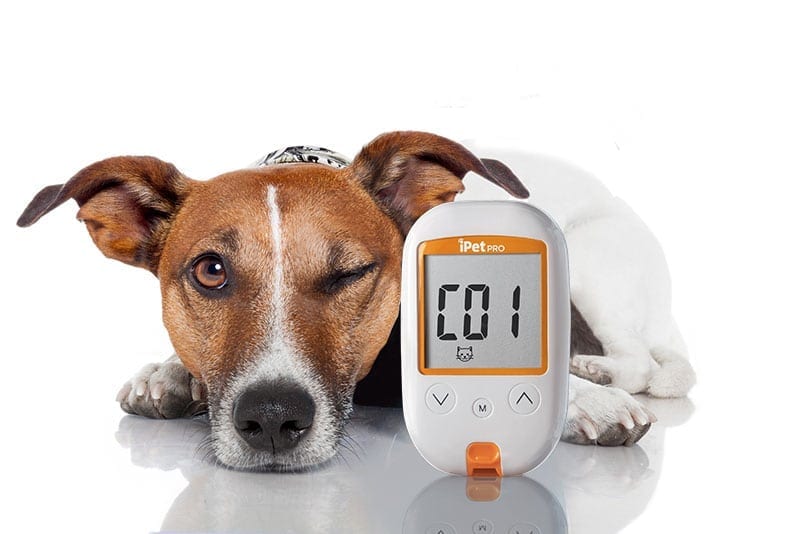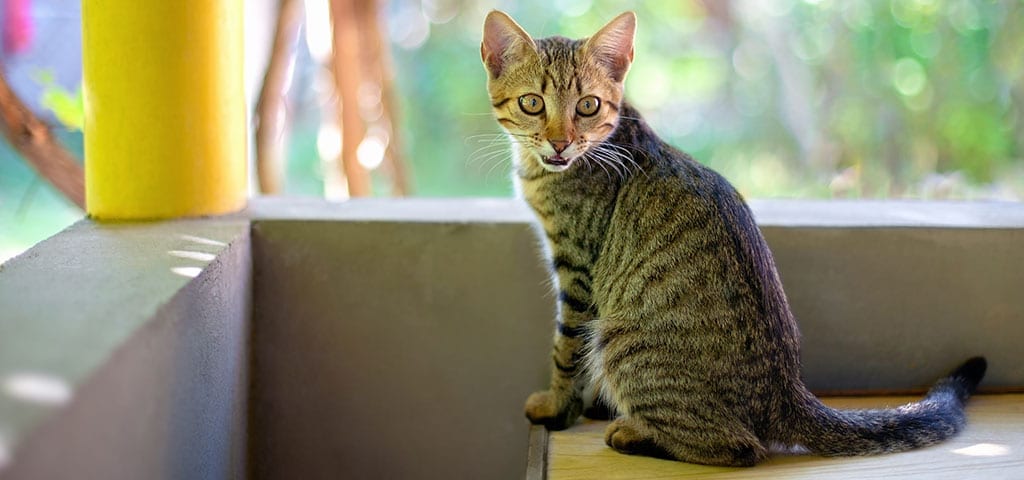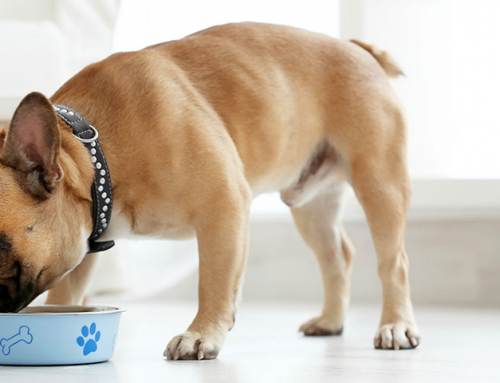Questions from the diabetic pet owner are the fuel I use to keep myself educated on all things related to pet diabetes. I’ve had some incredible questions asked of me over the years, and quite a few that have made me do some research so I could understand it and then make it easy to understand for all of the diabetic pet owners that I encounter. Today’s question is about feline remission and achieving good pet diabetes management. Maybe this one can help you!
Dear Dr. Joi,
I came across your article regarding feline diabetes and remission. I have been searching the Internet diligently for weeks trying to gather information regarding my cat. He is male, indoor, and 11 years old. He is my most active cat, runs all the time through the house, up and down the stairs, and he is quite the jumper. He has never been overweight, but he has always been a dry kibble cat. He never developed a taste for canned cat food nor human food. Has pretty much always been healthy, with the exception of a urinary blockage in 2011. The vet put him on Royal Canin Urinary Dry SO prescription diet then, and he has eaten that ever since.
In February 2018, he suddenly stopped eating and lost weight. We took him to our vets who said he had pancreatitis and diabetes. His blood sugar level was 361. I successfully weaned him off dry food in about three weeks. He has not had any dry food probably since March, 2018. I also did research and now feed him the highest protein content canned food, fat secondary, and no carb content above 10%. I look for the low phos for his urinary tract issues as well, but that one is hard because he is still fussy about what he eats.
Now I read online that the stress of going to the vet can raise the blood glucose levels, so the periodic tests I have been paying for at the vet office is probably not accurate enough for them to keep raising the dosage of his insulin. I also have read that if you have successfully weaned your cat off a high carb diet, that his insulin dose often will need to be lowered. My vet has consistently increased it, and just last week increased to 3 units.
On 3 units, he does not move, does not raise his head all day. He does not walk around. If he walks to the litter box, he stops multiple times on his way to lie down and rest. I noticed about 4 weeks ago the signs of neuropathy. He is now walking on his hocks, wobbly in his legs and unsteady walking up and downstairs. He misses jumps repeatedly and has fallen multiple times. I have started to give him Vitamin B-12 injections, and I have started to see a very slight improvement.
I am wondering if he actually ever really was diabetic. Can that diagnosis be accurate while also being diagnosed with pancreatitis? His initial level was 361, and he probably was “stressed out”, at the vet at the time, so maybe this was a false read, and his blood glucose really was never out of whack? His second blood test, which was done two weeks later, was 288. Still probably stressed out as he cries all the way there and pants, so if 288 was a stress elevation, it probably really was way lower than that. And they raised the insulin units after that second reading, because my vet said it should not be above 170.
His readings are bouncing all over the map. And the only thing that keeps changing is the insulin dose – higher and higher. I always feed high protein canned food. Never any dry, ever. Stressed out readings at the vet were 200s then increased up to the 400s on his last curve. They also performed a fructosomine test and the results were “fair”. I would be very, very interested in your thoughts concerning my cat. By the way he has gained all his weight back, and his drinking has tapered off.
Fantastic questions! We need to be our pets’ advocate for health care. Heck, we should all be our own advocate for our own health care. When veterinary clients study and educate themselves about their animal’s condition, we achieve better glucose control and improved health and longevity for our beloved pets.
Great job taking away the dry food. One of the most important treatment goals for cats with lower urinary tract disease is dilute the urine as it is hard for crystals to form in dilute urine. Even with his lower uninary issues, with diabetes and canned food he is unlikely to have a repeat issue. You’ve increased the water intake (canned food has 5 times more water than dry food) plus diabetes causes dilute urine as well. In general, as cats age into their teens their urine often becomes more dilute, and the incidence of lower urinary tract disease from crystals decreases dramatically if a pet has dilute urine.
He probably was indeed diabetic at 361, even if part of the elevation was from stress hyperglycemia. Pancreatitis is a common cause of diabetes in pets. Cats often start as type 2 diabetics and then may progress to full blown diabetes if the blood glucose stays high. This negative impact of a high blood glucose on the pancreas is called “glucose toxicity”.

3 units is a big dose for a diabetic cat, especially is he is not overweight. And those numbers you listed (if that was the order of the glucose curve) actually went up after his insulin dose. He might be having somogyi swing. His weakness and lethargy suggest hypoglycemia.
You must start home blood glucose testing to identify his real blood glucose numbers, eliminating the stress of being at the vet, and to identify if his blood glucose is too low. Please, please, please, get a pet blood glucose meter and test his blood glucose at home. Chat with your vet about dropping the dosage if that was his last curve while at 3 units, particularly as he acts weak. Consider altering the dose based on his glucose at each feeding, using his blood glucose level at that time determine how much insulin he gets.
I don’t really like the Fructosamine nor A1C tests unless we can’t get an accurate curve. We get more information from checking blood glucose values. Clearly it is best to run blood glucose curves at home where we remove stress hyperglycemia from the equation. If a client refuses to run a curve at home (i.e. fractious animal or a physical inability of a client), then we might consider a Fructosamine or A1C test. Fructosamine and A1C levels don’t tell us how to adjust the insulin dose; they simply tell us good, fair and poor control.
The B12 shots may help too, but the key to treating diabetic neuropathy is to get the glucose under control. You’ve shown me that you are dedicated to your cat and spent a lot of time educating yourself. I’m proud of you!! Now, get a blood glucose meter.
Have a question or comment? Then post below! I always enjoy hearing from my readers!
NOTE: Consult your veterinarian first to make sure my recommendations fit your pets special health needs.













Dr. Sutton,
I feel such relief after finding your website. We just adopted an 8 year old diabetic cat, who was taken off insulin just a week ago. Our humane society, where we adopted him, so was kind but encouraged us to stay on “prescription” dry food, which has high carbs. After doing research on your site, I realize they are woefully undereduated and would like to help share this knowledge with them. Do you have any research articles that you suggest I point them to? Not only will it help their cats, it will save their organization money. The prescription food they recommended is quite expensive. Thank you for your time and all that you do to advocate for kitties!
Veterinarypartner.com has a great article on “diabetic cat food”. Veterinarypartner.com has lots of great articles for diabetic pets, but this one should do the trick. Thank you for adopting a diabetic cat!! https://veterinarypartner.vin.com/default.aspx?pid=19239&id=4952919
You are wonderful! Thank you. I look forward to sharing this info with our local humane society! We can all do better for these cats!
Lindsey
Very useful information. Thank you. There are not many websites where you can get this kind of information about feline diabetes.
Dear dr. Joi,
My name is Ivan and I live in Croatia. We have a diabetic cat named Hachi. He is 7 years old and was diagnosed in March 2022.and after 2 weeks of “only diabetic food approach” that gave no result he started to use Lantus glargine in April. It was great and the sugar was just fine with the smallest dose. After 2 months the vet decided to lower the dosage even more cause sugar level was too low and we were great again and he even said that maybe we can get to remission and be off insulin for some time in future.
Fast forward to August where the problem starts. The cat starts to have a itch and it began as small patch on legs (that I saw and taught at first it was patch from where he was shaved for a needle) and in few days it started to get serious. He was sneezing and he was red around the eyes with now excessive overgrooming and biting his fur off. We went to the vet and cleaned his anal glands that were full and clogged (that is his problem since he was 1 year old), and after some tests (skin, blood, etc.) they said that it was allergy since blood was really great and no parasites were found. On what?? Probably food. But he eats same foods for 4 months now (Purina wet Diabetic food beef and same thing with chicken in combination with Royal Canin Diabetic dry food). Also vet gave him antibiotics for 7 days for eventual secondary infection (I really think that helped nothing).
So we decide to put him on Royal Canin Diabetic wet food (that he had for first 3 weeks back in March) and Royal Canin Diabetic dry food. But he has still same rash that turn into crusts and scaled skin with wounds from biting. So we tried Atop7 spray and nothing happened at all. Then we tried Apoquel, with no results at all. Next was even higher dose of Apoquel, still nothing. The ONLY thing that had any results was Maxitrol (or something like that) that visually helped with redness and swelling around the eyes. So now we are desperate, waiting for dermatology expert from Slovenia and he is still biting his fur off. The tail is half bald, the body is covered with crusts and bald patches, ears are red and all mauled, almost every part of him is just bad. He is twitching his back cause it itches him. He eats and drinks normally. We can’t go hypoallergenic diet cause he is diabetic, we can’t go steroids also. I don’t know what to think. Can it be insulin allergy (but after 4 months of use)? We have another cat that is just fine and both are strict indoor cats that share everything, bed, toilet and toys. Only thing they do separate is eating since one is diabetic.
Thanks for your time and sorry for poor English.
I so sorry your kitty is experiencing this.
First off, you CAN use a hypoallergenic diet for a diabetic cat—justused a canned hypoallergenic diet such as a hydrolyzed venison canned food or hydrolyzed duck canned food. The big deal about diabetic diets for kitties is that canned food is lower in carbs than dry food. I think you should stop the kibble even if it diabetic kibble. Kibble is much higher in carbs that canned food.
Next, even if you aren’t seeing parasites, treat for them. Kitties are vain. They groom a lot. Itchy kitties overgroom! There might be a parasite that you cannot see. Something like Revolution or Breavect would get fleas and mites. I don’t know what products they have in Croatia.
Do see the dermatologist as soon as possible.
Apoquel is extra label use in kitties. It requires a higher dose for cats than dogs but it doesn’t often help.
Atopic dermatitis (a ocu, aka hay fever) isn’t very common on cats but can occur. You cou,d try bathing (if your cat allows) and antihistamine like chlorpheniramine.
I’ve never seen a pet allergic toinsulin but it doesn’t mean it cananot happen.
Chat with your vet who has examined him, and let’s hope the dermatologist can see him soon!
Thank you for quick reply. So the news are that we done new tests for bacteria, parasites and yiest. Cause vet taught it may be positive due to licking and wounds. Everything came negative yesterday. And same day we did punch biopsy at the dermatologyst that we wait now. Glucose was 4,5 whole time until today as we saw he is shaking and being letargic. The number was extra low at glucometer 1,3. So wet gave him liquid glucose and said that we are gonna try to remove him from insulin. So no more insulin today evening and tommorow morning and after the blood test he said if glucose is normal he is gonna try steroids since the cat is not responding to anything else. He said he never had this kind of patient that does not respond to any other form of drug. And the biopsy is gonna show if that is allergic or autoimmune rasg. But he said we must stop it before the test results cause 2 more weeks of waiting is too much since the skin is rapidly going worse.
Guess we are gonna go from there to some hypoallergenic canned food.
Do you know if there is a insulin reaction similar to our case? And if there is Ig-e based test that tells you that. Been reading about the test but only for human.
Thanks very much for your time.
If your kitty has gone into diabetic remission do please stick with canned hypoallergenic food rather than dry food. Cats do better on low carb diets and the steroid may push him back into diabetes. Canned food only and proper body weight may help decrease going back into remission.
I’m so glad you went to the dermatologist.
As we returned from skin biopsy everything went in bad direction suddenly. Guess sedation did something cause next day he did not want to eat and started to shiver. We rushed to vet and the glucose was 1.3 and they gave him glucose syrup. Still he did not want to eat later and we noticed that he is constipatie as he tryed to poop but could not. We ended up at vet again where they perform a enema and he had some seisure out of pain. Than a large and dry poop got out and he started to eat there. And that was the last normal behavior. As we got home he just became letargic with no reactions to anything. He did not want to eat, he did not react to us or to other cat. Next day he develop was still shaking. Glucose was 9.0, but now the body temperature was 34,3 Celsius .We tried to feed him with seringe in mouth and warm him with termofors and blankets. And in arround 10PM he started to have some seisures due to hypoxia cause he started to meow and breathe very hard. We got to vet at 11PM and did Xray that showed water in lungs and stil hypotermia (35,3 celsius), gave him diuretic and some pain relief drug and had ro be there first thing in the morning. He did get some sleep but every hour he got this suffocation seisure or whatever and than at 4AM he was faling on side and suffocate even more so we went again to vet where things went even worse and we had to put our little boy to sleep. The vet said that he never saw case like that and that he can’t do anything more due to his condition and medication.
He could not be sedated to get this water out due hypotermia and pverall condition. He could not get more painkillers cause he got 2dose already. He could not get more diuretic. He was already on antibiotics so that was covered.
And the vet said that he thinks he is shutting down systematic due to something more than allergy. Maybe some Autoimmune desease.
So we decided to let him go and end his suffer. Tha pain and disbelief are so strong that the words can’t explain it. 3 days before we had a cat with allergy buth with great bloodtests, with apetite,playfull, and …now. Stillwaiting the biopsy to maybe tell us more
I’m so very sorry you lost your beloved kitty. Much love…
Hello Dr. Joi,
My dog is 13.5 years old and currently on day 5 in the ICU. She was diagnosed with diabetes on May 12/22. Since then was put on 9 units of Vetsulin which increased to 12 units by May 25. No improvement in glucose. Levels consistently high 500-600. I took her into the emergency because she started loosing energy rapidly and because ketones in urine went from small to moderate in a few days. Since in the ICU, she’s been given short acting insulin every 2 hours and long acting every 4 hours. They ruled out a bunch of things, the only pending test is pancreas and Cushing’s. They also told me she has multiple tumors in the liver. I’m not sure where this will go but I’m taking my baby home tomorrow since the doctors can’t figure out why they can’t lower her BG. The question I have for you is what can I add to her water at home to keep her as hydrated as possible? Thank you.
I’m not aware of any water additive that would help her hydration. Do talk to your regular veterinarian for guidance.
Hello, i have a newly diagnosed cat( April,2021) with diabetes. As of the evening of July 1 he hasn’t needed insulin because of the diet changes I’ve made. My vet wants to do a curve test on him in about a week which will be a little more than 2 weeks of no insulin if we can make it that far. My question is, will they just monitor his BG without out any insulin intervention? I’ve worked so hard to get him into remission that i don’t want him back at square one. This whole process has been super stressful on me to the point it is effecting my daily life. Like one of your other commentators, i was basically thrown into giving him insulin with no support or knowledge. I luckily found a FB group that got me to check his BG at home, which my vet discouraged. Can you please answer the question of whether they can do the curve by just monitoring his BG without insulin to see if he truly could be in remission?
If your kitty isn’t on insulin, why don’t you just check the glucose at home where there is little chance of stress hyperglycemia. You can buy an Alphatrak meter starter kit for likely less than a curve at the vet office will be. A curve is to see how the pet metabolizes the insulin given by injection. Do continue low carb diets and a periodic blood glucose check and monitor urine output and thirst as diabetes remission can come and go in cats. It’s typically type 2 diabetes in cats, so carbs and obesity can end remission.
My 10 year old cat at 6 years old was overweight and ate kibble or anything he could get. He became deaf and lost weight and was then diagnosed with diabetes. Glucose curves were almost routine and his insulin (Lantus eventually bought from Canadian pharmacies was less expensive than here in USA) but then he also developed neuropathy in his hind legs and IBD. Trying to get his IBD and diarrhea under control was very necessary as he is unable to use a litter box because of his neuropathy. After much research I started feeding him Natures Logic canned food. He is in remission from diabetes that lasted 3-4 years and has been so for 15 months. I believe it’s the food. He also does not have diarrhea although his stools sometimes still have blood in them. His neuropathy is getting worse although he can still drag himself around if he is on a carpet. I am considering trying to find braces for his back legs.
I’m so glad his diabetes is in remission. Canned food is lower in carbohydrates than dry food and can be very helpful achieving remission. IBD can sometimes also be controlled with diet alone. Good job. Would you consider a visit to a neurologist? Most large cities have a neurologist and all vet schools would have a neurologist who could assess the situation and hopefully help you with something such as padding to protect his hind legs.
Dr Sutton: I have a 9 year old spayed Min Pin who before diagnosis ran around 12-13 lbs. Sept. 2, 2020 she was diagnosed after seeing a new vet for a hot spot on her leg. They did a CBC and urinalysis; found she had a BG of 430 and a UTI. The vet called with the lab results and said I needed to come in and get the insulin (Vetsulin 2U x 2 per day 12 hours apart), no mention of how much food to feed, however. She was given antibiotic for the UTI which cleared up with no problem. I did not do testing in the beginning as they said I should bring her in in 6 weeks for a ‘curve’ but no instructions about testing. I was nervous, upset, crying, because all of this came out of the blue. The vet stated talking to me about putting her down as an alternative and of course it just made it worse. We made the decision to switch vets as we were not finding that helpful; we did and long story short it all worked out fine. Got instructions on feeding, giving insulin, and they could do the first curve until I was comfortable with testing. Lily (dog) eats Purina Pro Plan Salmon and Rice for sensitive stomachs; she cannot eat anything with chicken or chicken meal or chicken byproducts in it, she throws up every time. She is on Vetsulin 1U 2 times a day (every 12 hours). Her food is 6.1g am/pm. I measure it carefully. Our concern is that she is now down to 9.8 lbs, her BG runs low, she is rarely in the middle 100’s. Tonight she was 87 fasting and I did not give her any insulin after she ate. This happened once a couple of weeks ago where she was in the 80’s, I did not give insulin and the next am I expected she would be 200-300BG. She wasn’t she was about 115. We started at 2U twice a day, then lowered to 1.5 after several weeks, then lowered to 1.0 after several weeks. Our vet is considering removing insulin all together and do careful testing. I am not opposed to that because I’ve wondered if she was correctly diagnosed in the beginning. As I said, we had taken her in to a new vet for a possible hot spot on her one foreleg as our original vet was not doing anything really but recommendin medications that did not work and we were spending $$$ with no results. So we went to the new vet, no appointment because of Covid, you just come in and wait to be called and cannot go back with your pet. We waited in their waiting room in a portioned area for 2 hours and finally they came out get Lily. She was terrified, she didn’t know them, looked at us like aren’t you coming and they took her back. They asked to do a CBC and urinalysis and we agreed as she had not had one done. They said we could leave and the doc would call when the lab results came back. So I am wondering and I think our present vet is too, whether or not she was diagnosed off of one blood test and it seems that no one there took into account that Lily was terrified and perhaps it could have been a spike in BG up to 430. She has never had BG anywhere near that level even when she spent the day at the new vet for her curve which never went over 140 all day, at any point. Is something like that even possible to be sort of ‘mis diagnosed’ because of a spike caused by nervousness. Min Pin’s are pretty high strung, at least this one is. I’d appreciate your thoughts. I just want to do the right thing for Lily. Is it reasonable to consider stopping insulin and test to see if there are any anomalies that pop up? She eats very well, but 6.1g is not a lot of food for a busy little dog. Even at 9 she is active chasing squirrels, running on the leash in the backyard, etc. Thank you. I appreciate your giving this your attention. Nancy
Stress hyperglycemia can cause a significant spike in blood sugar. A spike to 430 isn’t common but is possible, particularly in a diabetic pet.
Typically once a dog is diabetic they remain so. Cats commonly can go into remission once the glucose toxicity is addressed with some insulin. If your dog had been on steroids or had been in heat it is possible that she had insulin resistance.
I think trying her off insulin as your 2nd vet suggested is a reasonable option, so long as you continue to monitor her glucose carefully and give her insulin when needed.
Covid has been a stress for veterinarians as well as pet families. The majority of pets in my own hospital have adapted quite well to curbside, but not all. In fact with all the pet parents outside, it’s much quieter and relaxed for the pets in the clinic. Thankfully Covid vaccines are starting to roll out and hopefully by mid year vets can safely allow pet parents back into the clinics.
Happy holidays,
Joi
My 11 yr old schnauzer (Leah) was diagnosed with diabetes 3 months ago. Of course we put her on prescription dog food right away. My vet was checking her once a week (a morning and an afternoon glucose check), then 2 weeks apart. The morning checks are always high (300 to 500), the afternoon checks are lower (117 to 200), I don’t think she has ever done a glucose curve. My vet has increased her dose three times now, yesterday it was increased to 8.5 of vetsulin because her Morning level was 520 (but Leah had gotten into the other dogs food during the middle of the night). It seems like the vet is having a hard time regulating the dosage. I have offered to do the glucose test at home but the vet did not think that was a good idea. I have also asked about trying the freestyle libre, she had never heard about a CGM so that was not an option. Is there anything else we can do to get her regulated
Hi, forgot to mention my chiuaua mix is 10 yes old. If they can’t get her regulated, what might her life expectancy be? I know it’s almost certain the diabetes will eventually blind her. Vet said it could take awhile or sometimes it comes on sudden. Is this contingent on how well controlled the BG is? I’m scared to death I’ll wake up and see her already passed. I lost a dog previously to cancer that only lived to the age of 10. I went into a prolonged severe depression that lasted 5 yrs. So faced with this little one the chance of not surviving diabetes upsets me greatly.
The better the blood glucose regulation the better lower the risk of diabetic cataracts! Ocu Glo can help maintain vision in diabetic dogs, particularly due to the alpha lipoic acid. Chat with your vet. And certainly, any diabetic dog would do well to have a consult with a vet ophthalmologist.
Education is key to a well regulated diabetic. Home testing is also critical if you wish to maintain your sweetie’s vision. 🙂
Given that blood sugar readings can be influenced by stress in the vet office, is it also true that if you have to struggle at home to test, those readings will be increased also? Any suggestions how to get the most accurate readings?
Giving your pet attention is very helpful to distract your sweetie from the poke of the lancing device. Talking to your pet, help from a friend or family member, or even a low calorie treat such as a green bean might help lessen the anxiety. And you, too, should relax. Pets sometimes get nervous when the human about to take the sample is nervous. And of course, rubbing a site before a poke (whether from the lancet or insulin needle) decreases the pain.
I HAVE A DIABETIC POODLE……DIAGNOSED 15 MONTHS AGO…..HAVE MANY UPS AND DOWNS …….I Have started monitoring her with urine tests miday and during the night ..I adjust her insulin slightly..never going over 4 units as prescribed by the vet…..her weight is consistent….she is playing for the first time in A long time…she does not always eat when required so I dont give her insulin till her next meal….but I do give her food when she decides she is Hungary . This appears to be working very well. Is a urine test reliable for altering insulin levels….vet is happy with her progress.
Thanks so much for your input. I appreciate the opportunity to ask you additional questions. My veterinarian has been great about keeping an open door for communication as I attempt to get Tuffy in remission. Your feedback has been additionally helpful. Having the opportunity to have another resource to guide me in treating this disease is key to getting him under control again. If my doctor didn’t suggest something for treatment, it’s a strong possibility you might add something to his regiment…..for example the vitamin B shots for the neuropathy. She didn’t mention doing that to see if it might help him. When he goes in to be checked in March, I will ask her about trying the vitamin B shots to see if he would benefit from it. I deeply appreciate your help and guidance through this process! I want my little Buddy to be healthy again!
BTW, his last glucose curve i did last week looked good. The insulin is still keeping him within the normal ranges. Continuing to work on getting his weight down to around 12-14 lbs. He’s about 17 lbs currently.
Thanks for your support!
Update on Tuffy…..
I did his first BGC Jan 15th. His ranges looked good. He was 210 prior to insulin and after insulin dropped to 100 and basically stayed in that range just prior to his next insulin injection where he jumped up to 230 on his last test. I will be doing his next BGC test next week and hopefully his ranges will still look good. My vet is keeping him at 2 units twice a day for now. A question I would like to ask is how will I know he is in remission? What should I be watching for?
He isn’t drinking large quantities of water that I can observe when I’m at home, however, he still is producing alot of urine. Will that eventally decrease over time or is it still to early to see a decrease in output?
We had to increase his snacks as he started “Piking.” He ate a 9 ” ribbon and ate part of my wicker chair. Thankfully he passed both of those items. Apparently Piking is a side effect of diabetes? Bumping up his food intake has helped with that issue but I still have to keep an eye on him to make sure he isn’t eating other foreign objects! That was an expensive trip to the ER.
I did some research and contacted Fancy Feast regarding how many calories per can. I found out the pate ranges between 80 and 95 calories per can and the flaked food is a little higher in calories. The flaked trout is 105 calories per can. Hopefully if anyone reads my post, this might help them. I also researched how many calories a 17 lb cat needs per day…it comes out to about 280 calories. With Tuffy’s morning and evening feeding plus the snacks, he is getting about 240 calories per day. He seems to be losing weight on this diet plan. I will know more on his next doctor check up. Please let me know if I need to adjust the calorie intake…it was a rough estimate I found online.
One thing I am wondering how to treat is his developing hyper extended carpals from the diabetes. Any thoughts for treatment of that? I found a website that makes braces for cats and dogs with that condition but I don’t know how well the braces would work with a cat? Any suggestions related to that issue brought on by the diabetes?
Thank you so much for you help and my fuzzy Siamese thanks you too!
How to tell if he is entering remission: continue to monitor his blood glucose frequently.
As far as how to help his diabetic neuropathy: that is giving him time and controlling his blood glucose as best you can. I’m so glad you are doing home monitoring. Some vets will give weeklyinjectins of vitamin B12 for cat diabetic neuropathy, but as far as I know there is no proof that it helps. If I have a cat with diabetic neuropathy I give B12 injections as it’s not going to hurt!
You are doing a great job. Continue the communication with his family veterinarian.
🙂 Joi
Thank you so much for replying to my questions and for your feedback!
Hello,
I have a couple of questions regarding my kitty. He was recently diagnosed with diabetes. His sugar level was at 500 when he was tested to see if he was positive for the disease. He is unfortunately obese. He weighed in at 18 lbs and probably should weigh about 12 to 14 lbs. My goal is to get his weight down, and get him in remission if possible.
He is currently eating wet food, “Fancy feast classic” as it is low in carbs and high in protein. My first question is, how much of the can should I feed him? Currently, I have given him the whole can as he tends to vomit if his tummy gets empty. He is on a strict twice a day meal, however after consulting my vet about the vomiting, he gets a tablespoon of Fancy feast late morning and at bedtime to hopefully prevent further vomiting episodes.
How much should I reduce the full can for his morning and evening feedings to balance out the snacks?
My second question is, when I do his morning feeding and then inject the insulin, he sometimes stops eating for about 15 min. Then he is ready to finish the rest of his meal. This is within a 30 min window of time from when he takes his first bite of food, the insulin injection, and then his finishing up the meal. Is it okay to allow him to finish eating the rest of his food in that time frame? I wasn’t sure how long to let him eat once the insulin has been given.
He hasn’t had a blood glucose curve test yet as we just started insulin 5 days ago. I will be doing home testing in 2 weeks with the glucometer to see how well the dosage is working. He is on 2 units twice daily for the moment.
If you have any further suggestions on how to get him in remission I would appreciate it. I plan to keep him on a very tight schedule!
Thank you for any advice and coaching to get him in remission! 🙂
First of all, you are doing a great job by having him on a low carb canned diet and that you plan on doing home glucose testing. Those 2 items alone will greatly increase our chance of getting him into remission.
Since I’ve not examined him I can’t tell you exactly how many calories you should give per day to get the weight off of him. Chat with your vet about his total calories and be sure to have regular weigh ins every 2 or 3 weeks to keep you on track. Good job giving the majority of calories at mealtime and letting him ingest those calories over half an hour should pose no issue. If he continues to vomit you might ask your vet for some Cerenia or Zofran or mirtazapine which all help decrease nausea for cats.
Happy holidays and great job!
I’ve had a high blood glucose reading for my Norweigian Forest Cat (9yr old female at 13.4 lbs) 363. We’ve also noticed an increase in urination and drinking. We’ve switched her diet to wet Fancy Feast (she shares 2 3oz cans twice a day with her sister) and 1/8c low carb dry once per day. Her readings are dropping (223) and I’m spot checking about 4hours after her am feed. She’s not on insulin yet and we really want to get this controlled so she’s not a full blown diabetic. What time of day and how frequently should I be testing her? Does a glucose curve make sense at this point? Thank you
Suzanne, your cat IS a full blown diabetic. If we get her off dry food altogether we might be able to get her into remission, likely with the assist of some insulin to get her out of glucose toxicity.
Since you’ve already seen a nice drop with some diet change, try taking her off the dry food altogether. A curve is checking blood glucose to see where the glucose bottoms out after an insulin injection. Doing spot checks for a pet not on insulin is a great idea. Chat with your vet about insulin. Insulin and low carb canned food and close glucose monitoring are the most likely way to get her into remission. Remission may last a short while or possibly could last long term. And, if she is tubby, be sure to get her to a lean body weight.
Have a chat and exam with your vet.
I’m in Australia and your units of measure are very different. I have a diabetic cat. He’s 18.5 years old and has been insulin dependent for 2.5 years. He’s not overweight. 4.3 kilograms. He’s currently on 0.02 units of lantus (glargene). His levels are currently all over the place. He ranges from 4-25. My vet says between 8-12 is optimum. He’s on wet and dry food (Hills Prescription M/d). He’s been monitored once a week (spends the day at the vet having his BSL’s checked every 2 hours). They are very hard to manage. How do I do tests at home? He hates his ears being touched. The vet draws the smallest amount of blood from a vein in his leg for the one off tests.
You would likely have improved glucose regulation of you cut out the dry food. Even the low carb dry folds such as M/d and dm war higher in carbs than most canned foods. I prefer diabetic cats get wet food only, the lower the carbs the better.
You can read how to check a blood glucose on our archived articles… Go to the “articles” tab then the search box. I wrote in depth how to check a blood glucose. Search “back to basics” and you’ll find a 4 part article on basics pet diabetes info such as how to check a blood glucose and run a blood glucose curve. 🙂